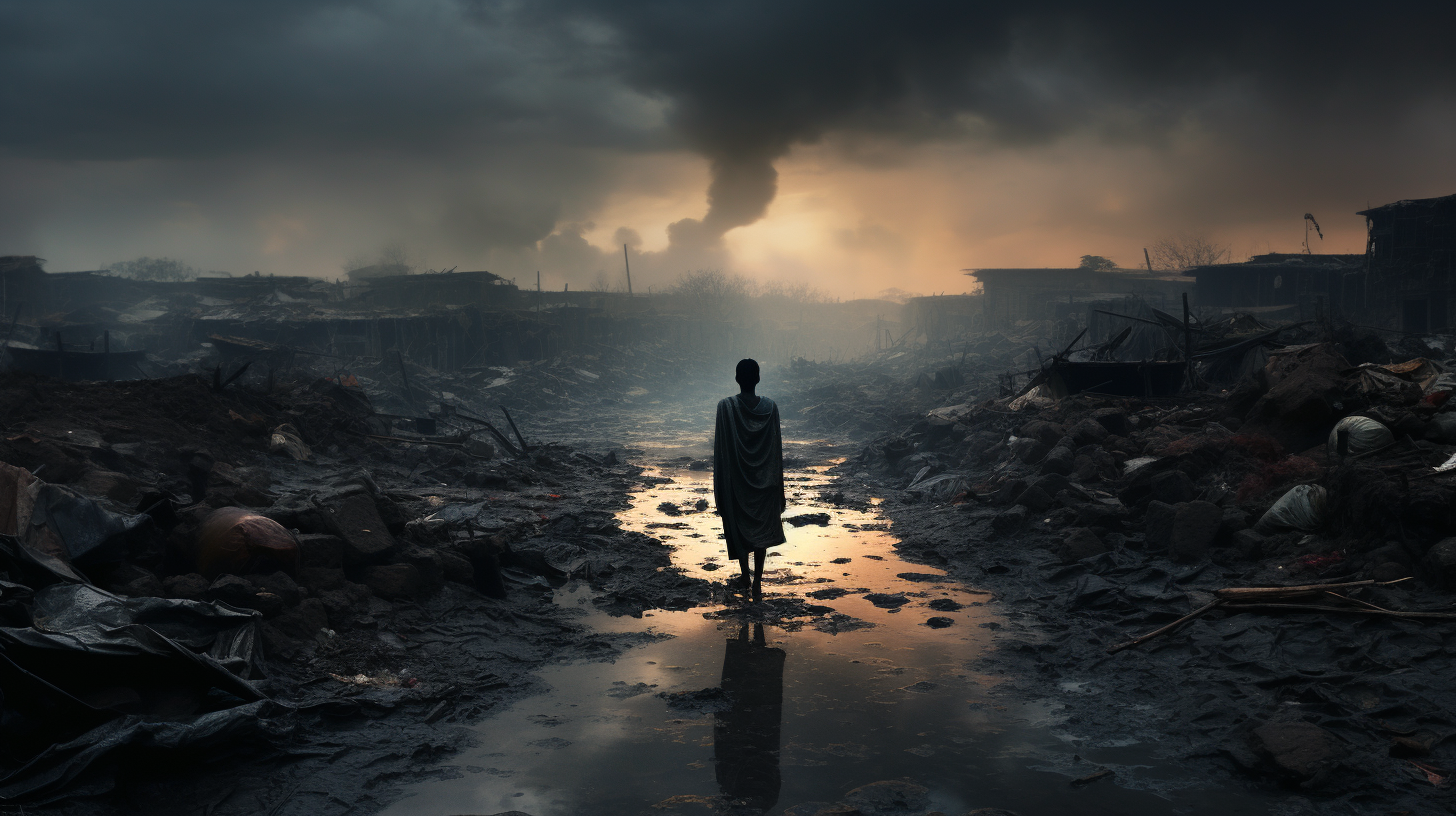Amidst a world soaked in despair, where the rising tides have forever altered the skylines of storied metropolises and the horizon has merged with azure waters, a newer and more sudden calamity has begun to wash away the remnants of normalcy: the relentless cloudbursts that unleash their curse on what’s left of the land. The tale of these Refugees of the Rain is one of survival against a backdrop of relentless skyborne assaults.
Once celebrated as the bearers of life, the heavy rains have turned malevolent. Imagine waking up to a day where the sky is a perpetual gloomy grey, and the rainfall is not just a gentle shower but a vicious downpour with the power to transform streets into rivers within minutes. It is not the poetry of raindrops but the terror of torrential rain, which, unlike the gradual submergence of cities, comes without warning and leaves sorrow in its wake.
The latest incident, a veritable waterfall from the heavens, struck without warning. In a cruel mimicry of archaic water rituals, these cloudbursts have taken on a ritual of ruin, demolishing homes, sweeping away the last standing constructs of the old world, and creating a new class of displaced individuals: the Rain Refugees. Citizens of no state, their lives are punctuated by the erratic temperament of the clouds above.
“It’s as if the sky has turned against us,” whispers a forlorn figure, sheltering beneath the skeletal remains of what was once a lively market street. Their voice, a tremulous blend of fear and resignation, speaks to the shared disquiet of a population that has learned to listen for the sounds of approaching rain with the same dread once reserved for mythic beasts and marauding armies.
The scale of this desperate migration is unimaginable. Camps designed as transient solutions are swelling into permanent settlements. These ephemeral cities lack the resources for long-term habitation, straining to support the surging numbers. Sanitation, shelter, food—basic essentials of life—are turning luxurious. The camps bear witness to an ironic twist of fate: communities that once flourished in unison with the rains are now pummeled into submission by the same skies they used to revere.
The social fabric unravels as desperation mounts. Tales of woe weave through the makeshift dwellings, each one steeped in the tragic irony of rainfall that rips apart lives rather than nurturing them. The lack of governmental response and international aid paints a damning portrait of neglect and abandonment. Amidst all this, the resilient human spirit endures, birthing innovations in water collection and rainproofing, nuanced in their simplicity and ingenuity.
The story of these Rain Refugees is not merely a chronicle of loss and despair, but also a glimpse into humanity’s indomitable drive to adapt and survive. “We’ve learned to catch the rain,” declares a young voice, proud and hopeful, amidst the dismal downpour. Converting crisis into opportunity, some have started cultivating hydroponic gardens, their hands crafting a symbiosis with the very element that destroyed their past.
Yet, hope is a commodity in scarce supply, and the eerie parallels with our own world cannot be ignored. As readers of this dystopian narrative, we are thrust into an uncanny valley of reality and fiction, urged to reflect upon the urgency of the climate crisis in our dimension. While the Refugees of the Rain may be figures of a parallel existence, the environmental patterns that exiled them into their plight mirror a potential future of our making.
Is this ceaseless rain a harbinger of calamity or a final beseech to humanity? As the fictional earth of Green Dystopia drowns under the relentless downpour, the clarion call becomes thunderous, compelling us to learn, prepare, and act before we, too, find ourselves refugees of our neglect.
